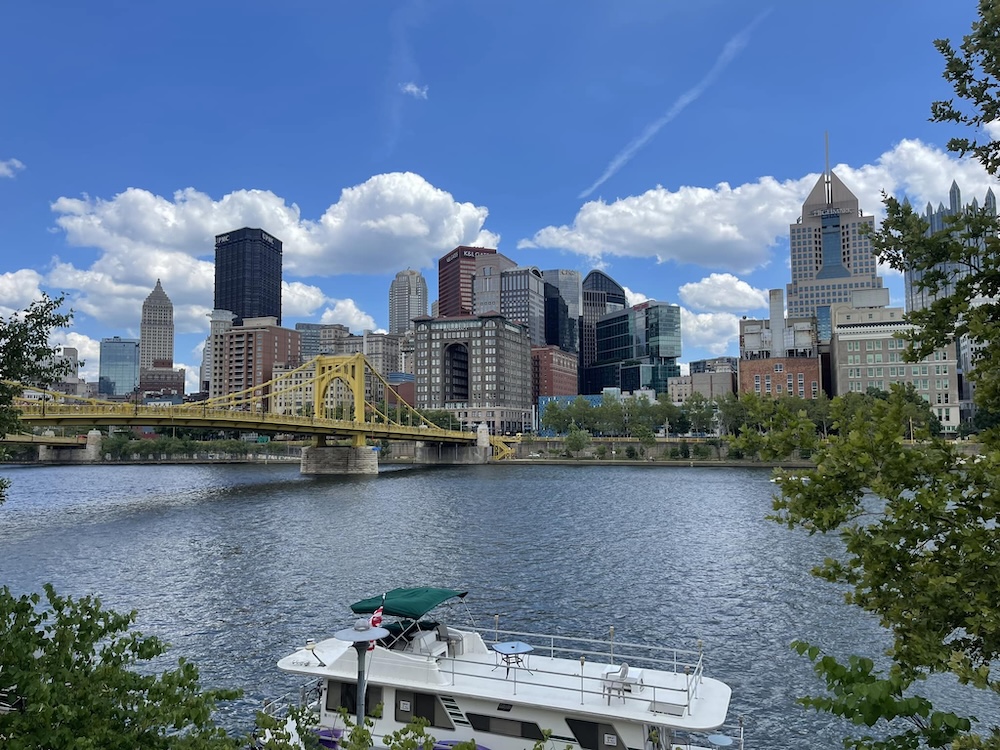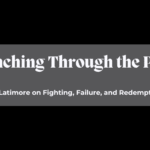Once synonymous with roaring steel mills, Pittsburgh has undergone a remarkable transformation, emerging as a burgeoning tech hub. This transition speaks to the city’s resilience and adaptability in the face of economic shifts that have redefined its identity. Understanding the trajectory from steel production to tech innovation is crucial to appreciating Pittsburgh’s current landscape.
Historically, Pittsburgh flourished as the heart of America’s steel industry, attracting waves of immigrants and fostering a diverse cultural environment. The economic boom of this era laid the foundation for the city’s vibrant communities but also necessitated an evolution as industries changed. As the steel mills dimmed, new opportunities arose, paving the way for a fresh identity rooted in technology and innovation.
In this article, we will explore the rise of Pittsburgh’s tech ecosystem and its various facets, including the role of educational institutions, revitalization efforts, and community collaboration. By examining key tech companies and the future outlook, we aim to capture the essence of how Pittsburgh has transformed from Steel City to a dynamic center for technology and creativity.
The Legacy of Pittsburgh’s Steel Industry
Pittsburgh, once known as the “Steel City,” has a rich industrial history. In the late 19th and early 20th centuries, it was the heart of steel production in the United States. For decades, mills along the rivers operated around the clock. These mills boosted the economy and turned Pittsburgh into a major industrial power.
However, the city paid a price. Air pollution and poor working conditions were common. As global competition grew, the steel industry faced declines in the 1970s and 1980s. Many mills shut down, leading to significant job losses.
Despite this, the legacy of the steel industry remains.
Key Steel Industry Impacts:
- Economic growth
- Urban development
- Labor unions establishing workers’ rights
Today, Pittsburgh celebrates its steel past while embracing new industries. The city’s foundations in hard work and innovation have paved the way for its transformation into a tech hub. This balance of honoring the past and building the future defines Pittsburgh’s ongoing transformation journey.
The Economic Boom of the Steel Era
The Economic Boom of the Steel Era played a pivotal role in shaping Pittsburgh’s identity. In the late 19th and early 20th centuries, the city became known as the “Steel City.” This was due to its booming steel industry, driven by its rich coal resources and strategic location.
Key Factors of the Steel Boom:
- Abundant Natural Resources: Pittsburgh had easy access to coal and iron ore.
- Strategic Location: Located near rivers, it allowed easy transportation of raw materials.
- Innovation: Advances in steel production, like the Bessemer process, boosted output.
Economic Impact:
| Year | Steel Production (in tons) |
|---|---|
| 1875 | 50,000 |
| 1900 | 5,000,000 |
The city’s economy flourished as steel factories sprouted. Jobs in steel mills drew thousands of workers, leading to a population surge. This period was marked by prosperity, with Pittsburgh becoming a national industrial powerhouse.
However, as the steel industry declined, Pittsburgh faced challenges. But, this era laid the foundation for the city’s later transformation into a tech hub. The echoes of this boom still influence Pittsburgh today.
Waves of Immigration and Cultural Influences
Pittsburgh’s transformation from a steel powerhouse to a tech hub is a tale of resilience and vision. Once known as the “Steel City,” Pittsburgh’s economy was heavily reliant on steel production. However, in the late 20th century, the decline of the steel industry brought economic challenges.
The city responded by embracing innovation and technology. Key to this transformation was the role of local universities, such as Carnegie Mellon University and the University of Pittsburgh. They focused on research in robotics, engineering, and computer science, attracting tech companies to the area.
A supportive ecosystem emerged, fostering startups and tech giants alike. Companies like Google and Uber chose Pittsburgh for its talent and affordability. Public and private initiatives fueled growth, alongside investments in infrastructure and education.
Waves of immigration have also enriched Pittsburgh’s culture. These diverse communities contributed to the city’s evolution, bringing unique perspectives and skills.
Highlights of Pittsburgh’s Transformation:
| Era | Key Development |
|---|---|
| 1980s | Steel industry decline |
| Late 20th Century | Focus on technology |
| Early 21st Century | Tech giants settle in |
Pittsburgh’s journey from a steel to tech hub showcases its adaptability and innovative spirit.
Transitioning from Industry to Technology
Pittsburgh was once a city defined by its steel mills. These mills offered jobs and powered the economy. However, as the world changed, so did Pittsburgh’s industries. The city faced tough times when the steel industry declined in the 1980s. Instead of giving up, Pittsburgh chose a new path. The focus shifted to technology and innovation.
Local universities played a crucial role in this transition. Carnegie Mellon University and the University of Pittsburgh led the way. They invested in research and supported new ideas in fields like robotics and computer science. This laid the groundwork for a tech transformation.
Emergence of Key Tech Companies
In the early 21st century, big tech companies took notice of Pittsburgh. Giants like Google and Uber saw potential in the city’s talent pool and affordable living. They set up offices and research centers in Pittsburgh.
These companies were drawn by the highly skilled graduates from local universities. The blend of affordability and talent made Pittsburgh an attractive choice. As these key companies grew, they brought jobs and opportunities to the area.
Growth of Startups and Innovation Hubs
Pittsburgh’s focus on technology didn’t just attract big names. It also sparked growth among startups and innovation hubs. A supportive ecosystem emerged, ready to nurture new ideas.
Public and private investments helped create spaces for startups to thrive. Innovation hubs, co-working spaces, and accelerators popped up around the city. They provided resources and mentorship to budding entrepreneurs.
The success of these startups showed Pittsburgh’s commitment to innovation. The city became a place where ideas turned into products, and small companies turned into big players. Pittsburgh had successfully transitioned from a steel city to a tech hub.
Role of Educational Institutions in Transformation
Pittsburgh’s shift from a steel city to a tech hub is remarkable. A key player in this transformation has been its educational institutions. These schools have helped the city adapt and grow. They provide education, research, and foster innovation. This has led to job creation and economic growth.
Contributions of Universities and Research Facilities
Universities in Pittsburgh, like Carnegie Mellon University and the University of Pittsburgh, have been crucial. They have fueled the tech surge with their top-notch programs and research. Below are some key contributions:
- Skilled Workforce: They produce graduates with skills in technology and innovation.
- Research: Cutting-edge studies in robotics, artificial intelligence, and health have drawn tech companies.
- Business Incubation: They offer resources and support for budding tech entrepreneurs.
Here’s a table summarizing their impact:
| Contribution | Impact on Pittsburgh |
|---|---|
| Skilled Workforce | Attracts tech companies |
| Research | Spurs innovation |
| Business Incubation | Launches new tech startups |
These contributions have made Pittsburgh a magnet for tech firms. With strong educational backing, the city continues to thrive in the tech world.
Revitalization Efforts and Economic Renewal
Pittsburgh has undergone a remarkable transformation from an industrial powerhouse to a modern tech hub. The city’s revitalization efforts and economic renewal have played a key role in this change.
Key Revitalization Efforts:
- Education and Innovation: With institutions like Carnegie Mellon University, Pittsburgh has positioned itself at the forefront of technology and research.
- Infrastructure Development: Investment in infrastructure has improved transportation and connectivity, making the city more attractive to tech companies.
Economic Renewal:
- Diverse Industries: While steel once dominated, Pittsburgh now thrives in healthcare, robotics, and artificial intelligence.
- Job Growth: Tech companies and startups have increased job opportunities for residents.
| Industry | Old Economy | New Economy |
|---|---|---|
| Primary | Steel | Technology |
| Emerging Sectors | None | Healthcare, Robotics |
Conclusion:
Pittsburgh’s shift from a steel city to a tech hub is a testament to strategic planning and investment. This transformation has not only revitalized the local economy but has also set a precedent for other cities aiming to achieve similar success.
Cultural Revival in Pittsburgh
Pittsburgh is experiencing a cultural renaissance that complements its economic transformation. This revival brings a vibrant mix of arts, history, and innovation.
The Thriving Arts Scene
Pittsburgh’s arts scene is flourishing. The city is home to renowned institutions like the Pittsburgh Opera and the Carnegie Museum of Art. Local theaters and galleries showcase diverse artistic talents. Events like the Three Rivers Arts Festival have become community highlights, drawing residents and tourists alike.
Iconic Landmarks Reflecting History and Innovation
Pittsburgh boasts landmarks that blend history with modern technology. The iconic Carnegie Science Center offers exhibits that inspire curiosity and innovation. The Phipps Conservatory and Botanical Gardens demonstrate sustainability through green building practices. Meanwhile, the Cathedral of Learning stands as a symbol of the city’s educational heritage and architectural grandeur.
This combination of cultural, historical, and technological landmarks helps to preserve Pittsburgh’s rich past while embracing its promising future.
Community Collaboration and Inclusivity
Pittsburgh’s transformation from a steel city to a tech hub is a story of community collaboration and inclusivity. Once known for its steel mills, Pittsburgh has now become a center for technology and innovation. This change took careful planning, teamwork, and a shared vision for the future.
Community Involvement:
- Local leaders and residents worked together to plan Pittsburgh’s transformation.
- Universities like Carnegie Mellon and the University of Pittsburgh played key roles by fostering innovation.
- Public and private sectors collaborated to attract tech companies and create new jobs.
Inclusivity:
- Efforts were made to ensure all community members were part of the change.
- Programs aimed to train locals for the new tech jobs that were being created.
- Initiatives focused on ensuring diverse representation in the workforce.
| Key Pillars | Description |
|---|---|
| Education | Universities developed programs to support tech growth. |
| Workforce Training | Programs were established to help locals gain tech skills. |
| Inclusive Growth | Efforts ensured diverse community involvement and benefits. |
By bringing together various sectors and focusing on inclusivity, Pittsburgh not only rebounded from its industrial past but also set a model for other cities to follow.
Future Outlook for Pittsburgh’s Tech Ecosystem
Pittsburgh’s journey from a steel city to a tech hub is not over. The city is poised for even more growth in the tech sector. As technology evolves, Pittsburgh is ready to embrace new advances. The focus will be on fostering emerging technologies like AI, robotics, and biotechnology. With strong university support and a collaborative community, Pittsburgh is set to lead in these areas.
Challenges and Opportunities Ahead
The road ahead has both challenges and opportunities.
Challenges:
- Maintaining and expanding infrastructure to support tech growth.
- Bridging the skills gap to ensure the workforce keeps up with new tech needs.
- Sustaining community inclusivity amid rapid changes.
Opportunities:
- Building partnerships between tech companies and educational institutions.
- Encouraging startups and innovation through increased funding and support.
- Enhancing programs that promote diversity in tech jobs.
| Challenges | Opportunities |
|---|---|
| Infrastructure improvements | Stronger tech-education partnerships |
| Overcoming skills gap | Support for startups and innovation |
| Sustaining inclusivity | Promoting diversity in tech roles |
As the city continues its transformation, addressing these challenges and seizing these opportunities will be key to future success. Pittsburgh’s commitment to growth and inclusivity remains at the heart of its promising tech ecosystem.
Conclusion: Pittsburgh’s Evolving Identity and Prospects
Pittsburgh’s shift from a booming steel city to a modern tech hub is a tale of resilience and innovation. Once known for its steel mills, the city faced an industrial decline in the late 20th century. This forced a transformation in its economic landscape.
Today, Pittsburgh is a vibrant center for technology and education. The city invested in research and development, with universities like Carnegie Mellon and the University of Pittsburgh leading the charge. These institutions paved the way for growth in artificial intelligence and robotics.
Key Factors in Pittsburgh’s Transformation:
- Strong Education Foundations
- Investment in Technology
- Collaboration Between Institutes and Businesses
A supportive local government and community efforts have also played a role. They created an environment where startups and established tech companies thrive.
As Pittsburgh continues to evolve, it holds great promise for growth. The city is building on its historical strengths while embracing new opportunities. With its diverse economy and skilled workforce, Pittsburgh’s prospects seem brighter than ever.







